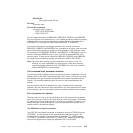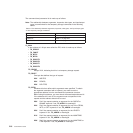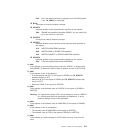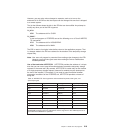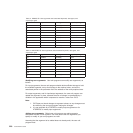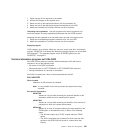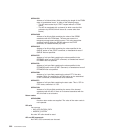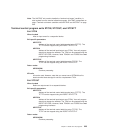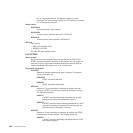1. Obtain storage for the argument to be added
2. Initialize the storage to the required value
3. Select and set up the appropriate pointer from the parameter list
4. Select and set up the appropriate argument existence bit in the EID
5. Modify the parameter list to reflect the new end of list indicator.
Removing user arguments: User exit programs can remove arguments (for
which the program is totally responsible) associated with the SYSID keyword:
Assuming that the argument to be removed exists, the user exit program must:
1. Switch the corresponding argument existence bit to '0'b in the EID
2. Modify the parameter list to reflect the new end of list indicator.
Example program
CICS supplies—as a softcopy listing only (not as a source code file)—an example
program, DFH$XTSE, that shows how temporary storage requests can be modified.
See Appendix F, “The example program for the XTSEREQ global user exit,
DFH$XTSE,” on page 877.
Terminal allocation program exit XALCAID
XALCAID is driven when an automatic initiation descriptor (AID) with data is
canceled in one of the following ways:
v By means of the CEMT transaction
v During execution of a SET TERMINAL or SET CONNECTION command
v During reinstallation of a terminal or connection.
XALCAID is invoked only if there is data associated with the AID.
Exit XALCAID
When invoked
Whenever an AID with data is canceled.
Note: It is not possible for the exit to prevent the request from being
canceled.
Exit-specific parameters
UEPALTSD
Address of a 4-byte field containing the symbolic identifier of the
transaction which was to be started by this request.
UEPALTRM
Address of a 4-byte field containing the identifier of the terminal or
connection to which this request was directed.
UEPALDAT
Address of an area of storage containing the data specified in the
FROM option; or hexadecimal zeros, in either of the following
cases:
v The AID was created by a START request without a FROM
option.
v The AID is associated with a channel (in which case the field
pointed to by UEPALCHN will be set to a name other than
blanks).
Chapter 1. Global user exit programs 221





